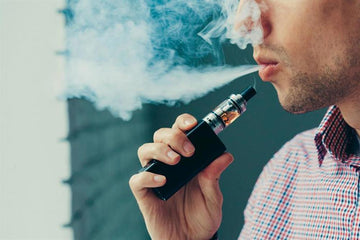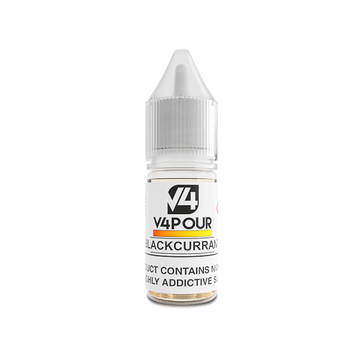In recent times, vaping has emerged as a compelling substitute for traditional smoking, igniting debates and discussions regarding its merits and demerits. Advocates of vaping often enumerate several reasons they believe confer advantages over conventional cigarettes. In this exhaustive exploration, we delve into the multifaceted aspects contributing to the perceived benefits of vaping.
1. Reduced Harmful Chemicals:
The fundamental tenet of vaping lies in its deviation from the combustion process synonymous with traditional smoking. Advocates argue that by heating a liquid, commonly containing nicotine, into an aerosol, vaping eliminates or substantially diminishes the presence of numerous harmful chemicals associated with burning tobacco. This alteration in the delivery mechanism is postulated to contribute to a potentially less injurious inhalation experience.
Furthermore, the noteworthy absence of tar, a notorious byproduct of burning tobacco, is consistently underscored as a pivotal distinction. Tar, a complex amalgamation of substances linked to diverse health issues, sees reduction in vaping products, a development often lauded as a positive stride.
2. Odor and Residue:
Beyond considerations related to health, the olfactory impact of vaping is frequently accentuated. Vaping typically generates less enduring odor in contrast to the pervasive smell linked with traditional cigarettes. This attribute can be especially appealing in social settings, where the discreet nature of vaping might enhance social acceptance.
Additionally, the diminished residue left on clothing and surrounding surfaces represents a noteworthy point of difference. For those conscientious about the impact of their smoking habits on personal and shared spaces, this aspect of vaping may be perceived as a pragmatic advantage.
3. Flavour Variety:
An intriguing facet of the vaping experience lies in the diverse array of flavours available. Vaping liquids, commonly denoted as e-liquids, present a plethora of options, ranging from traditional tobacco and menthol to an extensive selection of fruity, dessert, and beverage-inspired choices. This variety allows users to tailor their vaping experience to align with their preferences, potentially rendering the act more enjoyable and satisfying.
The expansive selection of flavours also contributes to the vibrant subculture surrounding vaping. Enthusiasts often engage in discussions about their preferred flavors, exchange recommendations, and explore new and innovative options, fostering a sense of community within the vaping milieu.
4. Nicotine Control:
A pivotal aspect of vaping is the flexibility it affords users in regulating their nicotine intake. E-liquids are available in various nicotine strengths, enabling individuals to select a concentration aligning with their preferences and, if desired, gradually decrease their nicotine consumption over time.
This nuanced approach to nicotine management is often positioned as a valuable tool for those seeking to diminish or eliminate their dependence on nicotine. The capacity to tailor the nicotine content of e-liquids may contribute to a more individualized and potentially effective strategy for those on a journey towards smoking cessation.
5. Potential Smoking Cessation Aid:
Amid ongoing debates about the effectiveness of vaping as a smoking cessation aid, some studies suggest its potential role in supporting individuals aiming to quit smoking. The concept involves transitioning from traditional cigarettes to vaping and subsequently reducing nicotine intake. This gradual reduction approach may provide a bridge for smokers attempting to break free from the addictive cycle.
However, it is crucial to note that the scientific community continues to explore the long-term effects of vaping, and regulatory bodies meticulously scrutinize the marketing and sale of vaping products to ensure they do not inadvertently encourage non-smokers, especially young individuals, to initiate nicotine use.
6. Convenience and Accessibility:
The ubiquity of vaping devices contributes to their appeal as a convenient and accessible option for those seeking an alternative to smoking. Vape pens, pod systems, and other vaping devices are widely available in various retail outlets, making them easily obtainable for individuals exploring alternatives to traditional cigarettes.
The increased permissibility of vaping in public spaces, relative to smoking, is an additional factor that may influence its adoption. While regulations regarding vaping in public areas are subject to change and vary by region, the perception of reduced harm to bystanders compared to secondhand smoke from combustible cigarettes is often acknowledged in discussions surrounding the acceptability of vaping.
7. Community and Social Aspect:
The ascent of vaping has given rise to a distinctive subculture, complete with its own community, language, and events. Vape shops, both physical and online, serve as hubs where enthusiasts gather to explore new products, share experiences, and engage in discussions about the evolving landscape of vaping.
Online forums and social media platforms further amplify the communal aspect of vaping, providing a virtual space for individuals to connect with like-minded enthusiasts worldwide. The sense of camaraderie within the vaping community contributes to the overall experience, creating a supportive environment for those navigating the nuances of vaping culture.
In conclusion, while these points shed light on the potential advantages of vaping, it is imperative to approach the subject with a balanced perspective. Vaping is not without its controversies, and ongoing research is necessary to fully understand its long-term effects. Individual considerations, health goals, and regional regulations should guide decisions regarding vaping as an alternative to traditional smoking. As the landscape continues to evolve, informed choices based on current scientific evidence remain paramount.
News
Multifaceted Advantages of Vaping






























